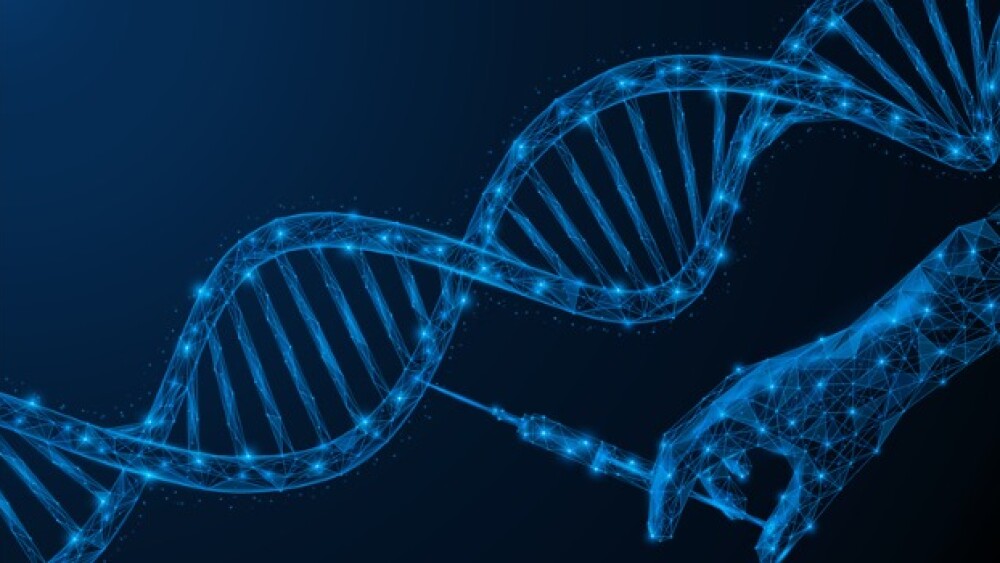Nanoscope Therapeutics nabbed a victory on the changed primary endpoint of its Phase IIb vision loss gene therapy trial Tuesday, teeing the biotech up to file for FDA approval of the candidate this year.
Pictured: Illustration of a gene therapy showing a syringe injecting a treatment into a DNA strand/iStock, Ilya Lukichev
Nanoscope Therapeutics claimed a hit on the changed primary endpoint of its Phase IIb vision loss gene therapy trial Tuesday, as the biotech looks to file for FDA approval of the candidate this year.
The study compared two doses of MCO-010, a mutation-agnostic gene therapy, to a sham control in 27 people with retinitis pigmentosa. The chronic genetic eye disease is characterized by degeneration of the retina. Spark Therapeutics, part of Roche, won FDA approval for Luxturna (voretigene neparvovec) in the condition in 2017 but the authorization only covers patients with mutations in the RPE65 gene.
Nanoscope designed MCO-010 to improve the vision of all patients with retinitis pigmentosa, regardless of the genetic basis of their condition. The gene therapy consists of an adeno-associated virus vector that delivers multi-characteristic opsins to re-enable retinal bipolar cells to detect light.
Last year, an investigator in the clinical trial said the study did not meet its primary endpoint, which, at that time, was assessing the efficacy of MCO-010 using the multi luminance y- mobility test at 52 weeks. Spark tracked the change in multi-luminance mobility test scores over 52 weeks to show the efficacy of Luxturna. The test measures changes in functional vision, as assessed by the ability of a subject to navigate a course accurately and at a reasonable pace at different levels of light.
Nanoscope changed the primary endpoint of its Phase IIb trial in January 2024 and released a statement about its talks with regulatory agencies the next week. According to Nanoscope, the FDA said the change from baseline in a measure of visual acuity in low vision patients could be an appropriate primary efficacy endpoint to support a filing for approval.
Tuesday, Nanoscope presented data on the change in best-corrected visual acuity (BCVA) at week 52. The Phase IIb study linked both doses of the gene therapy to statistically significant improvements in BCVA, a vision test, causing the trial to hit its new primary endpoint.
Nanoscope changed the primary endpoint after publishing 52-week results on the original measure of efficacy, although the biotech said it finalized and submitted a revised statistical analysis plan before the completion of week 76. The low dose failed to beat control on BCVA at week 76 but the high dose was significantly better than the sham treatment.
The biotech tracked reductions in logMAR from baseline of 0.539 and 0.374, respectively, in the high and low dose arms after 76 weeks. Nanoscope said in January that the Icelandic Medicines Agency endorsed a 0.3 logMAR change as being clinically meaningful for patients with severe vision loss. The biotech is now preparing to file for FDA approval in the second half of 2024.
Nick Paul Taylor is a freelance pharmaceutical and biotech writer based in London. He can be reached on LinkedIn.






